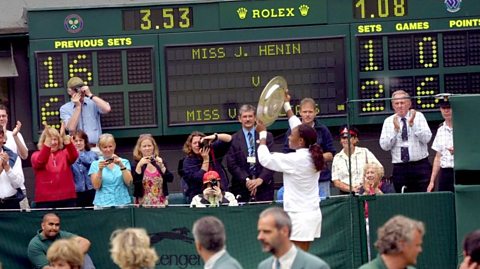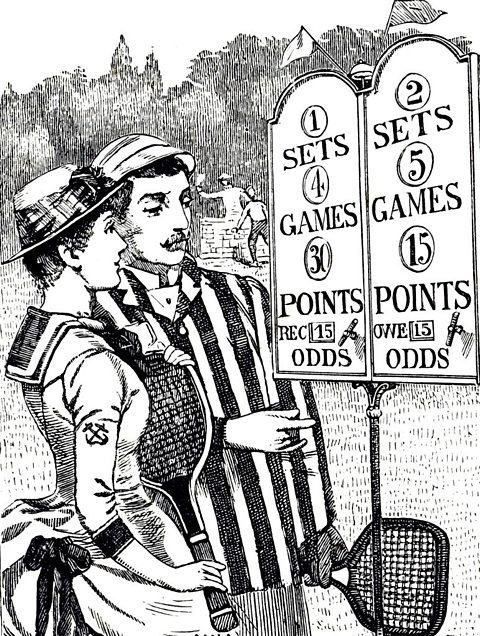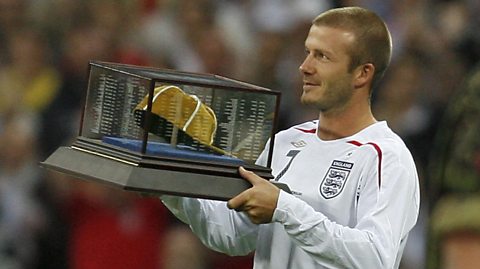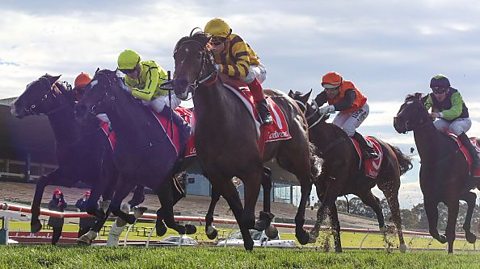Like the smell of freshly cut grass and the anticipation of many a rain delay, some things never change at Wimbledon. Namely your preparedness to switch channels when a match stretches into its fourth hour.
Even if you're a fan of the tournament, thereтs bound to be a few technical terms and phrases coming your way that will take you by surprise.
Weтve put together some explainers for the terms youтll hear in the commentary, from the regular to the obscure.
Love
It makes the world go round; except the bits where the tennis courts are.

The origins of 'love' as a score lie in the figure zeroтs resemblance to an egg. In sport, itтs common to refer to a nil or nought score as a duck or goose egg, and the French word for egg is lтoeuf - the pronunciation of which isnтt too far removed from the English тloveт.
There is another theory. In Dutch and Flemish, the word тlofт means honour, so in the most sporting context, anyone struggling to score is still playing for honour.
Brutaliser
This isnтt a medieval weapon involving spikes. Itтs a shot.
A brutaliser is a strike tennis players rarely plan to make. As it comes off their racket, itтs clearly heading directly for their opponentтs body and it takes a deft mix of skill and swift reaction for the person on the other side of the net to return it.

Bagel
Somedays your best tennis is left in the locker and you simply canтt deliver against a switched-on opponent. The result is a disappointing 6-0 set in your rivalтs favour.
Itтs such a damning result, itтs no wonder it has its own name. Ignoring the concept of love mentioned earlier, the zero resembles a bagel in shape, hence its name. Itтs also known as a doughnut for the same reason. Lose a match without winning a single game and itтs the unfortunate achievement of being double or treble/triple bagelled.
However, since itтs a baked goods theme, have tennis types ever noticed how a six and zero placed so close to each other look a little like a German pretzel? (if pretzel catches on in tennis jargon, remember you read it in Bitesize firstтІ)

Dinner set
Itтs not just wedding lists which make these desirable. Any player who can claim the dinner set in their career is doing rather well.
Not only is it a first place finish at each of the four slam tournaments (Wimbledon and the French, US and Australian Open championships), itтs a runner-up slot at each of them too. In a way, itтs a set of four dinner plates with a matching side plate.

Britainтs Andy Murray hasnтt done too shabbily in collecting his dinner set. Heтs been a runner-up in all four of the major tournaments, as well as winning the Wimbledon and US Open titles.
Deuce
French pops up in a few tennis terms, including this one. When a game is at the 40-40 mark and a player still needs to win by two clear points, then it goes to deuce. This is where a player must first score to gain advantage in the game, then score the next point to win.
It comes from the French word deux de jeux, meaning two games (or points in this case). In the 18th century, deuce could also mean bad luck or the devil. Itтs not the best of luck to go to deuce and lose on your service game, but itтs hardly the work of the devil.
Seed
Thereтs often great interest in who the top seeds at Wimbledon, or any other major tournament, will be.
And if you were taking a lucky guess that thereтs a horticultural background to the term, youтd be correct.

In order to keep competitions interesting, the best players are delayed from meeting each other until as late into the tournament as possible. Itтs based on the way seedlings are arranged in a garden, with the smaller ones found at the front of the plot and the larger at the back so they donтt impede on the smaller ones when they are growing (or trying to progress through a major tennis tournament).
The first round of the Wimbledon singles competition features 128 players. Thirty-two of the top-ranked players in the world are seeded and the draw is arranged so that none of the top 32 can meet at this stage by placing them into different sections. If each seed lives up to their status and continues to beat unseeded opponents, they shouldnтt play another seed until at least the third round, when only 32 players remain. The sections of the draw are also arranged so that none of the top eight can play each other until the quarter finals and none of the top four seeds until the semi-finals.
Seeding was invented for tennis but itтs now been embraced by other sports, including football.
Let
Nerves can get to the most experienced of players. Imagine serving for the championship when that opening shot doesnтt quite go to plan? Fortunately, thereтs a rule for that.
In any game, a let is given when, on serve, a ball clips the net and bounces inside the service box and the player responsible is allowed to serve again. The rule isnтt that nice though. If that clipping mistake makes the ball land outside the service box, then itтs a fault.
Its roots lie on an Old Saxon word lettian, which meant hindering something or someoneтs progress, or an obstacle. In tennis terms, the obstacle is an interruption to the smooth flow of play.

Fifteen, 30 and 40
In football, you score a goal, your teamтs score goes up by one. Perfectly logical. In tennis, you score a point, itтs straight to 15. Score again, and it goes up to 30. Thatтs fine, weтre getting the hang of it now, itтs all about multiples of 15, so your next point should take you up to 45тІ Hang on? Where did 40 come from?
It doesnтt make any sense. Until you look back in history.
The 15, 30 and 40 scores most likely date back to the days of the French court in the 15th and 16th centuries. One theory is that clock faces were used to record the score on court. Each player began at 12, then was moved to quarter past (15) with the first point, then half past (30) with the second and quarter to (45) with the third. To win, a player had to be first to get the hand back to midnight.
But why 45 and not 40? Thatтs down to deuce. To accommodate the two clear points a player must take each game by, it looked far neater to move things back by five minutes. Going from 30 to 40 instead of 45 meant that, in a deuce situation, the advantage could be recorded by moving the hand on the clock from 40 to 50, then another nicely symmetrical 10 minutes to midnight for the win. It was basically breaking the clock face down into manageable chunks.
There is another theory rooted in French heritage. A hugely popular game at the time was jeu de paume, similar to tennis but using the hand instead of a racket.
Scoring points on serve was useful as it enabled the serving player to move forward 15 feet, getting closer to their opponent and able to target shots with more accuracy. Another point meant moving an another 15 feet down the court. On a third point, they would only move forward 10, thus scoring at 15, 30 and 40.
If you think thatтs complicated, when tennis goes to a tie-break, the scores then go from one to seven, ignoring the clock face system altogether, with a player needing to get to seven first by two clear points. If nobody is two points ahead by the time the tie reaches the seven point stage, it continues until someone finally breaks the deadlock and goes two points clear.
Football may be considered a funny old game, but tennis? It's right up there with it.
This article was first published in July 2019 and last updated in 2023

The origins of football jargon
Read this to learn about even more sporting lingo.

Six stories behind horse racing jargon
Why a dark horse can win hands down on the final furlong even if they're not a front runner.

The cycling jargon you need to know about
Why you need to worry about bonking if you leave the peloton - and others.
